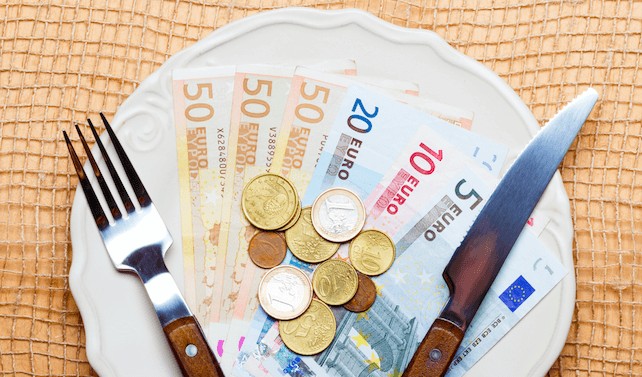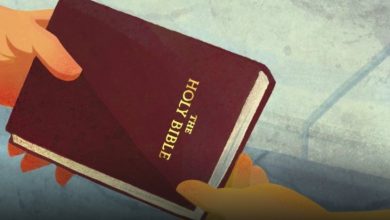Eleven Excellent Winter Driving Tips for Your Next Ski HolidayWeLove2Ski

Jane Bolton is MD at Erna Low Ski Holidays. She’s is the acknowledged expert with 20 years experience of selling ski-drive holidays and regularly gets behind the wheel to take her own family to the Alps for their ski trips. “Loading the family into the car and driving to the Alps means you can travel at your own pace, stop along the way to break up the journey, and save a heap of money on flights”.
Here are a few hints and tricks to make the trip go smoothly:
If you want to avoid the winter weekend queues in – and above – Gatwick and Geneva airports, take to the road. Driving to the Alps gives you the flexibility to travel with as many pairs of skis/boards and as much luggage as you want – something that you increasingly aren’t able to with the majority of airlines.
The idea way to travel is with a ski-drive specialist operator who’ll arrange your accommodation, breakdown insurance, Channel crossings, winter driving tips for the motorway, and even any stopovers you might want to make en route. Otherwise you can always make your own arrangements. Here are some winter driving tips to help make the journey easier:
1. Prepare Your Car
Contents
A little serious car preparation in the month before you travel can pay serious dividends. The key focus needs to be on tyres and traction. Think about this before you hit a blizzard – at night – as you start the climb to your destination. Winter tyres are ideal (and they will also give better performance in the UK at anything below 7C). If you live in the Alps, changing over to your winter set is part of the autumn routine. It’s surprising how few UK drivers do it. If you have snow tires you may well not need to on chains, but in most Alpine countries carrying them is a legal requirement.
Buy or rent them before you leave home – Snowchains.com is the biggest importer. You can also get the basic models at French autoroute service stations. We strongly recommend spending extra money to buy the easy-fit varieties that can be attached in just a few seconds per wheel. If you’ve ever tried to fit the basic model on a steep slope in the dark, you’ll understand why.
This might sound patronisingly obvious, but people have been known to fit chains to the wrong wheels, so be sure you know whether the front or rear wheels drive your car – if the chains are not on the driving wheels, they are not going to do much good. Only 10% of cars are rear drive and they are mostly BMWs and larger Mercedes and Jaguar models. You’ll need to pack a head torch, gardening gloves, and a ground sheet to kneel on. Tip: practice attaching chains in the relative comfort of your own driveway before you leave home; there are some really helpful videos on YouTube (such as the one above) that are worth watching. Trying to read inadequate instructions by torchlight is a frustrating experience to be avoided.
2. Look at The Pros of Driving

We mentioned having space for luggage and skis – but if you want to maximise this, add a large roof box or ‘rooftop cargo carrier’ like the Motion XT XXL produced by Thule – which has a 610 litre capacity and will fit six to eight pairs of skis or just a couple of skis and a lot of other luggage.
If you’re driving you won’t have to worry about taking only small bottles of liquids of less than 100ml in your hand luggage – like you do when flying, and if you’re self-catering you can save money by doing a big shop at the valley supermarket before arriving in the resort where prices are inevitably much higher due to being a captive market. If you’re going for Christmas, you could even bring a turkey from home.
Also, airlines have been known to lose luggage or send it to the wrong place. There is nothing more frustrating than having to spend 24 hours (or more) without your clothing/ski boots/skis as they have been left sitting on the airport runway or flown to Florida instead of France. This, of course, can’t happen if you’re taking luggage in your own car.
Another added bonus is having a car with you at your destination. You might want to make a day trip to a nearby resort, drive to a distant part of the ski area or to a restaurant that’s outside the village.
3. Be Aware of Environmental Impact

In general, driving generates less greenhouse-gas emissions than flying, with planes less fuel-efficient than cars. But lots of factors go into determining a car’s environmental impact – such as the distance travelled, the number of passengers and the type of vehicle and fuel. For example, four or five passengers travelling in a hybrid car is a lot more efficient than flying, but one or two people in a gas-guzzling car is less efficient.
Those with Teslas and other battery-run vehicles will find that in colder months, when temperatures are lower, more energy is required to maintain an optimal temperature. So you’ll need to charge your car when not in use at the end of the day. Tesla advise: ‘If you are unable to leave your car plugged in, you’ll need to increase your charge limit to 100% and fully charge your car. Keep in mind an unplugged Tesla loses approximately 1% of its range per day.’ Before your journey, you will need to have downloaded a European charger app such as Plug Share or Chargemap to find EV chargers. Currently, there are over 150,000 chargers available for public use across Europe – with France having 24,770, Germany 26,200, and the Netherlands 37,000. These days, many hotels and apartment buildings have charging stations, too.
4. Stay Entertained

You can listen to music, talking books or podcasts. This is particularly good if you’re travelling with younger children who can be entertained by hours of Harry Potter or Roald Dahl.
I strongly advise to pack the car with a selection of fun activities that your children can enjoy along the way. IPads and tablets are ideal for playing pre-downloaded games from the app store and watching a variety of films.
It’s important to download these before you leave to avoid using internet on the road, which can lead to heavy costs. Remember that downloads from Amazon sometimes only have a 48-hour viewing period and you are not always able to download additional material when overseas.
I’d also suggest investing in headphones for the kids along with a dual jack adaptor so that more than one child can watch the same thing. This means you can listen to the radio in peace or just enjoy the rare silence. Another good option is a portable DVD player with a selection of their favourite films from which to choose.
We have tried several different DVD options and the most successful combination for us has been a dual screen option so that both our children can watch separate films and there is also an option for them to watch the same one too. The DVD gets power from the lighter socket whilst travelling along, so there is no risk of running out of battery.
Playing games that everyone in the car can enjoy is another fun way to pass the time. Besides I-Spy, the alphabet game and 20 questions, try old-school colouring and activity books with a selection of crayons (probably not pens!). These should keep kids entertained for hours.
4. Cross The Channel Without a Hitch

Consider whether the tunnel or the ferry makes more sense. The tunnel obviously wins in terms of speed, but does not give the driver much of an opportunity to relax. Depending on your starting point in the UK, would 90 minutes on a ferry provide a well-timed break from driving?
If you go through the tunnel, consider buying a Flexiplus upgrade. It allows you to just turn up and get straight onto the next train without queuing. You can then either visit the lounge for refreshments and wifi, or stay in your car and you’ll be given a goody box of snacks, newspaper, and a bottle of water. Our Flexiplus upgrade will prove to be invaluable for arrival and departure dates over Christmas and New Year this season, when you can choose when to travel rather than be tied in to specific dates.
If you are going by ferry, and there are not too many of you, think about paying the extra for something like the P & O Club Lounge. It is a spacious oasis of calm and worth every penny.
6. Break Up The Journey

Most resorts within reach of Geneva – such as Morzine, Chamonix, Verbier, and Val d’Isere – are around nine to ten hours’ drive once you’ve made the Calais crossing. However, you might decide to break up the drive or even make a bit of a holiday of the journey itself by stopping somewhere interesting along the way.
Our favourite places to stop – either for a meal or for a night en route – include Reims and Troyes.
7. Avoid Those Little Accidents

If travelling with young children, make regular stops at service stations to avoid little accidents in the car There are motorway stops every 20-30km or so in France. These vary from toilet blocks in a wooded area with a few picnic benches scattered around, to big buildings with restaurants, shops and a petrol station.
One tip is to stock up on the essentials in case the services become very busy (or you get stuck somewhere having to put on chains) – such as water (bring your own refillable bottles), toilet roll, and snacks.
8. Watch Out

The French are remarkably helpful about signposting their fixed radar guns. If you see a radar sign on the motorway, there will be a fixed grey gun within a couple of kilometres. The favourite one to catch skiers is on the way home almost at the bottom of the steep section of the ‘White Motorway’ down from Mont Blanc/Chamonix – it is partially obscured by a road sign.
However, be aware that in the run-up to Brexit while UK driver information can be easily obtained, the French are making hay while the sun shines and the number of fines has dramatically increased. Most UK speed cameras have a tolerance of 10% plus 2mph over the limit, while French cameras only allow for drivers to exceed restrictions by 5%.
If the snow is heavy, you may see an overhead motorway sign saying a road is ‘Fermée aux PL’. Don’t panic – that means it is closed to trucks, not cars.
Heading south from Calais, follow signs first to Paris, then Reims, then Dijon. If you are going towards the Chamonix/Morzine, there are two parallel motorways that go south from Dijon towards Geneva: the A39 is a little shorter than the A6. On the way back, you will pick up signs to Lille once you approach Dijon and then signs for Calais start appearing after Reims.
If you are driving in heavy snow, check your headlights every time you stop, as frozen slush can quickly turn them into a pair of dim candles.
9. Know The Law

There is a French law which bans the use of Sat Navs which can detect speed cameras. This isn’t good news as most UK Sat Navs do it – and you can receive a fine of up to €1,500. This includes radar detectors, regardless of whether they are in use or not.
Driving your car across France requires car insurance that covers European travel, which you really need to check before your journey. Many policies default to third-party-only cover abroad unless you stipulate otherwise. European breakdown cover is also highly advised; you don’t want to be stranded at the side of the road with no one to call for help.
It is also crucial that you understand the French road regulations, such as – drive on the right! I know it’s obvious, but it is very important you remember that as soon as your car wheels touch French tarmac that you are on the right hand side.
The signage is also completely different, you will get used to seeing signs such as ‘Cédez le passage’ meaning give way, and a yellow diamond shaped sign meaning priority road, and red ‘ARRÊT’ signs meaning ‘STOP’. This does mean that you need to come to a complete stop, as I have witnessed people receiving tickets as their tyres were still rolling…albeit in very slow motion.
You should also know that the speed limits are shown in kilometres per hour (km/h) not miles per hour (mph) and also depend on the road conditions, so don’t go thinking you can put the pedal to the metal on the highways going 130mph – it is 80mph in good weather conditions and 68mph on wet roads. Also be aware that when entering a town there is a reduced speed limit not always indicated by a road sign, but just by the sign indicating your entry to the town.
10. Protect Your Car

Ensure that you car is properly winterised before you leave home – check the battery and follow manufacturer’s advice on coolant. Most importantly, top up your screen wash for temperatures as low as -20C.
Covered parking in a ski resort can be expensive. Parking outside is ok provided you have a shovel with you, so that you can dig your car out if there’s been a heavy snowfall. Start by freeing the number plate – digging out the wrong car really does sometimes happen! Some people cover their windscreen and wipers with a plastic sheet to make it easier to remove snow/ice from that area. Alternatively, lift your wipers off the screen.
11. Check The Costs

Eurotunnel is around £170 return and, according to Via Michelin the distance from Calais to, say, Morzine is 875km with tolls amounting to 58.60€ each way, fuel: 67.18€ each way, vignette 36.50€. Total price is 162.28€ one way for a family of four at the time of writing, not including meals or any accommodation en route.
On top of this, if you are driving to Austria or Switzerland you’ll need a motorway sticker (or ‘vignette’) for your windscreen costing 9.20€ for 10 days in Austria and 36.50chf for the annual Swiss version.
In comparison, you’ll need to get to your nearest airport in the UK either by train, taxi or your own car (for the latter, add in the cost of airport parking), flights and transfers x 4. You’re quite likely to spend the whole cost of driving out on two airline tickets, not including the cost of getting to and from the airport at both ends.
Another added bonus is having a car with you in the resort. You might want to make a day trip to a nearby resort, drive to a distant part of the ski area or to a restaurant that’s outside the village.
There is a French law which bans the use of Sat Navs which can detect speed cameras. This isn’t good news as most UK Sat Navs do it – and you can receive a fine of up to €1,500. This includes radar detectors, regardless of whether they are in use or not.
Driving your car across France requires car insurance that covers European travel, which you really need to check before your journey. Many policies default to third-party-only cover abroad unless you stipulate otherwise. European breakdown cover is also highly advised; you don’t want to be stranded at the side of the road with no one to call for help.
It is also crucial that you understand the French road regulations, such as – drive on the right! I know it’s obvious, but it is very important you remember that as soon as your wheels touch French tarmac that you are on the right hand side.
The signage is also completely different, you will get used to seeing signs such as ‘Cédez le passage’ meaning give way, and a yellow diamond shaped sign meaning priority road, and red ‘ARRÊT’ signs meaning ‘STOP’. This does mean that you need to come to a complete stop, as I have witnessed people receiving tickets as their tyres were still rolling…albeit in very slow motion.
You should also know that the speed limits are shown in kilometres per hour (km/h) not miles per hour (mph) and also depend on the road conditions, so don’t go thinking you can put the pedal to the metal on the highways going 130mph – it is 80mph in good weather conditions and 68mph on wet roads. Also be aware that when entering a town there is a reduced speed limit not always indicated by a road sign, but just by the sign indicating your entry to the town.
Readers’ Tips

We’ve collected together some tips from our readers. If you have any useful tips to add to this page, or you’d like to tell us about your own experiences driving to a ski resort, please add them into the comments box below.
A warning to all diesel car drivers: we spent a week in La Tania and then on to Campitello Di Fassa in the Dolomites. After a week there we went on to Zell am Zee. My warning – I filled up the car in Verona and went on to the mountains. The car was left fo a week in -10 conditions and it wouldn’t start! A flat battery. My host told me it was frozen diesel – Verona doesn’t put in the additive. Eventually I got it started by hand pumping the fuel through (a lot of diesels have a little pump, usually a rubber bulb, in the fuel line). I went and bought the additive at the next service station €13. My advice is check at the last fill-up before the mountains and buy some here before you go. STP sell it. David.
Get a péage tag for the French motorway system (available via the Eurotunnel website). Nothing better than moving into the outside lane and going through the péage booth at 30km/h whilst everyone else is queuing to collect a ticket or pay toll. Instead the bill is collected via DD (so no credit card overseas charges) at the end of the month. Essential for peak holiday dates both in the winter and summer. Gareth.
Check you are carrying at least one reflective jacket, it is the law. You can check for other legal requirements for driving in France and other countries on the AA website. Also, when buying fuel, it’s always a lot cheaper at large supermarkets rather than on the autoroute – look for Centre Commercial, usually signed on the outskirts of towns and cities. Filling stations generally have a 24 hour self-service pump. Julia.
A tip for those of us from “oop north” travelling down to Dover and over the Dartford crossing: you can pay for the toll ahead of the journeyand this will save you getting a fine for forgetting it or leaving it until your return, as a friend did last year. David.
For costs, keep in mind that you will probably have to pay for parking at the ski resort. In the past I have paid for underground parking – around 70 euros for the week I think. Richard.
Carry a strip of old carpet or thick cardboard in your boot to lie on when fitting/removing snow chains – it saves getting cold, grubby or wet – as often you leave it till the last minute to fit chains and the snow or slush is all around. I also keep a Stanley knife and cable ties in the car in case the snow chains are slipping. These can be used to help secure them – and then cut them off with the blade on removal. A torch/head torch is also vital for those night time incidents to check chains, read fitting instructions etc. A plastic-bladed shovel is far better for digging out the car – it won’t damage paintwork or bodywork like a metal blade. Baxter.
I have a pair of old gloves or cheap gardening gloves for putting the chains on in bad conditions to save those icy wet hands/fingers. Learnt this one the hard way. Damon.
If you drive a diesel car you need to make sure you fill up with polar diesel before you get to the resort and buy an additive to add to the diesel. This is because diesel can ‘freeze’ – it waxes in cold temperatures; the fuel lines become clogged and the car won’t start. It requires 24 hours in a warm garage for the car to thaw. Gerard.
You need a Hi Vis jacket for each passenger – placed in the car not the boot – and you really should look at one of the motoring organisation sites to check what you need to be legal. As to the journey, it can be expensive and you can save cash by taking the last ferry and stop overnight in France; then you can have a really early start refreshed. I usually go via Lille and Luxembourg Besancon taking advantage of the cheap fuel, and find I can usually get to south of Geneva in a 12-hour drive and not paying any tolls. I have both winter tyres and chains but I have never used the latter in 5 years, so all I can say is that you should do it – driving on the continent is far less stressful than driving in the UK…more roads, a lot less traffic…go for it! David.
Last, Wallx.net sent you details about the topic “Eleven Excellent Winter Driving Tips for Your Next Ski HolidayWeLove2Ski❤️️”.Hope with useful information that the article “Eleven Excellent Winter Driving Tips for Your Next Ski HolidayWeLove2Ski” It will help readers to be more interested in “Eleven Excellent Winter Driving Tips for Your Next Ski HolidayWeLove2Ski [ ❤️️❤️️ ]”.
Posts “Eleven Excellent Winter Driving Tips for Your Next Ski HolidayWeLove2Ski” posted by on 2019-11-28 14:00:41. Thank you for reading the article at wallx.net






